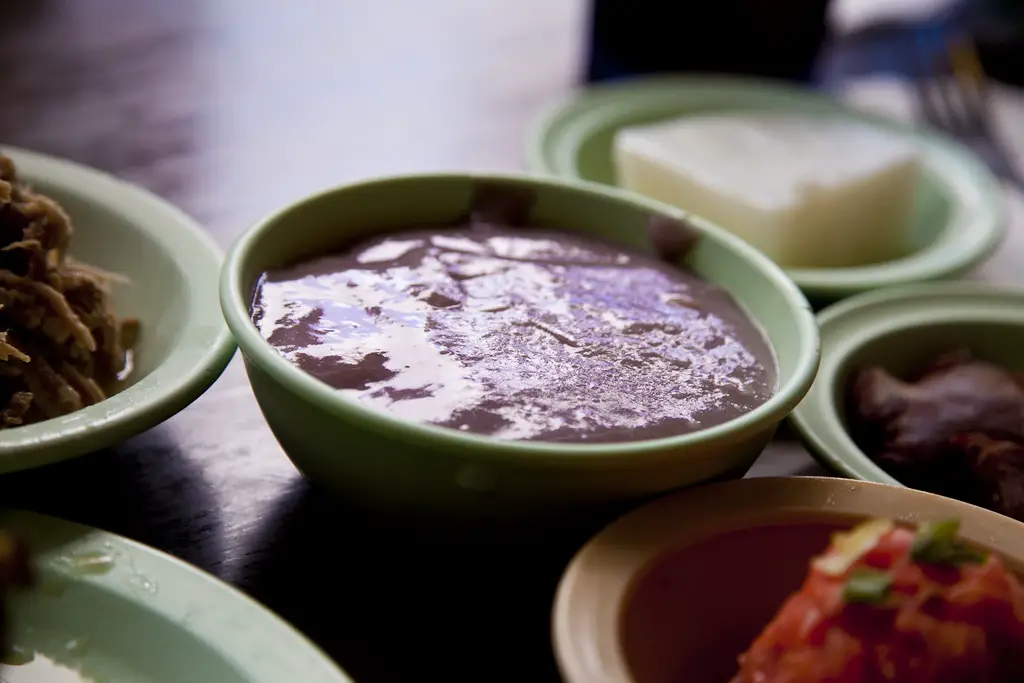In the heart of the Pacific Ocean lies a paradise known as Hawaii, a land of stunning natural beauty, vibrant culture, and, of course, delicious cuisine. One such culinary treasure that originates from this tropical paradise is poi, a traditional Hawaiian dish made from the taro root. Poi holds a special place in Hawaiian culture, and its preparation and consumption are deeply rooted in tradition and history. In this article, we will delve into the rich history and cultural significance of poi, as well as provide you with a step-by-step guide to making this unique and nutritious dish in the comfort of your own kitchen.
The History of Poi
Poi has been a staple of Hawaiian cuisine for centuries and has played a crucial role in the lives of the Hawaiian people. Its roots can be traced back to the Polynesians, who were the original settlers of the Hawaiian Islands. These early settlers brought with them the taro plant, which serves as the primary ingredient for making poi. Taro is a starchy root vegetable that thrives in the wet, fertile soil of Hawaii and is a versatile and nutritious crop.
The process of making poi begins with the cultivation of taro. The taro plants are grown in flooded fields known as lo’i, where they absorb essential nutrients from the water and develop into healthy tubers. Once harvested, the taro roots are peeled, cooked, and mashed to create the iconic poi paste.
The consistency of poi can vary, ranging from thick and dough-like to thin and watery, depending on personal preference. Traditionally, poi is made by pounding the cooked taro with a stone pestle called a pohaku ku’i ‘ai in a wooden bowl called a papa ku’i ‘ai. This labor-intensive method is a true testament to the dedication and craftsmanship of the Hawaiian people, as it requires strength, skill, and precision.
Cultural Significance of Poi
Poi is more than just a food in Hawaiian culture; it holds deep cultural and spiritual significance. It is often considered the “soul food” of Hawaii, representing the connection between the land, the people, and their ancestors. Poi is a symbol of sustenance, unity, and tradition.
In ancient Hawaiian society, the preparation of poi was a communal activity. Families and communities would come together to harvest taro, cook it, and pound it into poi. This practice fostered a sense of community and solidarity, as it required cooperation and shared effort. The act of pounding poi was also seen as a spiritual practice, with the rhythm of the pounding considered a form of prayer, connecting the living with the spiritual world.
Poi was not only a source of sustenance but also served as a dietary staple for Hawaiians. It provided essential nutrients and energy for the physically demanding lifestyles of the islanders, including fishing, farming, and surfing. Its simple yet nutritious composition made it an ideal food for sustaining the people of Hawaii.
Types of Poi
There are two primary types of poi: “fresh poi” and “pa’i’ai.” Each has a unique texture and flavor profile, catering to different tastes and preferences.
Fresh Poi: Fresh poi is the more common type of poi and is what most people think of when they hear the word “poi.” It has a smooth and slightly tangy flavor, with a consistency that can range from thick to thin. Fresh poi is made by adding water to cooked taro and mashing it until it reaches the desired texture. It is typically eaten as a side dish or accompaniment to other Hawaiian dishes.
Pa’i’ai: Pa’i’ai is a firmer and denser version of poi, often referred to as “hand-pounded poi.” To make pa’i’ai, taro is pounded without adding as much water, resulting in a thick, dough-like consistency. Pa’i’ai requires more effort to prepare and is traditionally pounded by hand with a wooden pestle. It is considered a delicacy and is enjoyed by many Hawaiians. Pa’i’ai can be eaten on its own or used in various recipes.
The Process of Making Poi
Now that we’ve explored the history and cultural significance of poi, let’s dive into the step-by-step process of making fresh poi at home. While the traditional method involves pounding taro with a pohaku ku’i ‘ai and papa ku’i ‘ai, we will provide a more accessible method using a food processor or blender.
Ingredients:
1-2 pounds of taro root
Water (for consistency)
Salt (optional, for flavor)
Instructions:
Selecting and Preparing Taro:
Choose fresh, firm taro roots from your local market. Taro should have smooth, unblemished skin.
Peel the taro roots using a knife or vegetable peeler, removing any brown or rough patches.
Cut the peeled taro into small, uniform pieces for even cooking.
Cooking the Taro:
Place the taro pieces in a large pot and add enough water to cover them.
Bring the water to a boil, then reduce the heat to a simmer.
Cook the taro until it becomes soft and easily pierced with a fork, which may take about 30-40 minutes.
Draining and Cooling:
Drain the cooked taro well and let it cool to room temperature. This step allows excess moisture to evaporate.
Blending the Taro:
Transfer the cooled taro to a food processor or blender.
Begin blending the taro, adding small amounts of water as needed to reach your desired consistency.
Blend until the taro is smooth and resembles a thick, pudding-like paste.
Seasoning (Optional):
If desired, add a pinch of salt to enhance the flavor of the poi. Start with a small amount and adjust to taste.
Serving:
Fresh poi can be served immediately as a side dish or accompaniment to other Hawaiian dishes.
Tips:
The consistency of your poi is a matter of personal preference. Some prefer it thick, while others like it thinner. Adjust the amount of water during blending to achieve your desired texture.
Freshly made poi tends to be slightly sweeter, while older poi develops a slightly sour taste over time. If you prefer a sweeter flavor, consume it shortly after making it.
Poi is more than just a dish; it’s a reflection of the rich history, culture, and traditions of the Hawaiian people. As you savor a spoonful of this unique and nutritious delicacy, you are partaking in a tradition that dates back centuries and connects you to the vibrant culture of the Hawaiian Islands.
While making poi the traditional way may be labor-intensive and require specific tools, the modern method we’ve discussed in this article allows you to enjoy this Hawaiian staple in the comfort of your own kitchen. Whether you choose to make fresh poi or try your hand at pa’i’ai, the process is a labor of love that pays homage to the enduring spirit of Hawaii and its people.
So, gather your ingredients, embrace the spirit of aloha, and embark on a culinary journey to master the art of poi. Whether you’re sharing it with friends and family or enjoying it as a solo treat, poi is a taste of Hawaii that you won’t soon forget.
Expanding Your Poi Experience
Now that you’ve learned how to make fresh poi, let’s explore some creative ways to enjoy this Hawaiian delicacy and expand your culinary experience. Poi can be incorporated into various dishes and used as a versatile ingredient to add a unique twist to your meals.
Poi Smoothie:
Blend fresh poi with tropical fruits like banana, pineapple, and coconut milk to create a delicious and nutritious poi smoothie. Add a touch of honey for extra sweetness.
Poi Pancakes:
Substitute a portion of the liquid in your pancake batter with fresh poi to make poi pancakes. These pancakes will have a lovely purple hue and a slightly tangy flavor.
Poi Desserts:
Get creative with poi in desserts. You can use it as a base for puddings, custards, or even cheesecakes. The subtle tartness of poi can balance the sweetness of desserts beautifully.
Poi Bowl:
Create a poi bowl by adding fresh poi as a base and topping it with your favorite fruits, nuts, and seeds. Drizzle with honey or coconut cream for added flavor.
Poi Poke:
Try using fresh poi as a base for a Hawaiian-inspired poke bowl. Top it with diced fresh fish or tofu, vegetables, and your choice of sauces for a nutritious and unique meal.
Poi Bread:
Add fresh poi to your bread or roll recipes for a distinctive flavor and vibrant purple hue. Poi bread makes for an excellent sandwich or breakfast option.
Preserving and Storing Poi
Freshly made poi has a relatively short shelf life, and it is best enjoyed within a day or two to appreciate its freshness and flavor. However, if you find yourself with leftover poi or wish to store it for later use, follow these guidelines:
Refrigeration: Store fresh poi in an airtight container in the refrigerator. It can last for up to five days, although the texture may become slightly thicker over time.
Freezing: Poi can be frozen to extend its shelf life. Divide it into portion-sized servings and place them in airtight containers or freezer bags. Frozen poi can last for several months.
Thawing: When ready to use frozen poi, transfer it to the refrigerator to thaw slowly. Stir well before serving to restore the desired consistency.
Keep in mind that the texture of thawed poi may be slightly different from freshly made poi, but it can still be used in various dishes and recipes.
Embracing the Spirit of Aloha
As you embark on your journey to master the art of poi, remember that it’s not just a culinary endeavor but also an opportunity to embrace the spirit of aloha. This Hawaiian concept encompasses love, affection, compassion, and a sense of unity with nature and the community.
Poi, with its deep cultural roots and significance, offers a glimpse into the traditions and values of the Hawaiian people. By preparing and enjoying this unique dish, you are not only savoring its flavors but also paying homage to the rich heritage and history of Hawaii.
Whether you’re enjoying poi as a side dish, experimenting with new recipes, or sharing it with friends and family, let the experience be a celebration of the aloha spirit that connects us all. As you savor each bite of this Hawaiian treasure, you’ll not only nourish your body but also your soul, forging a connection to the culture and traditions of the beautiful Hawaiian Islands. So, mahalo (thank you) for embarking on this culinary adventure, and may your poi creations be a tribute to the enduring spirit of Hawaii. Aloha!




